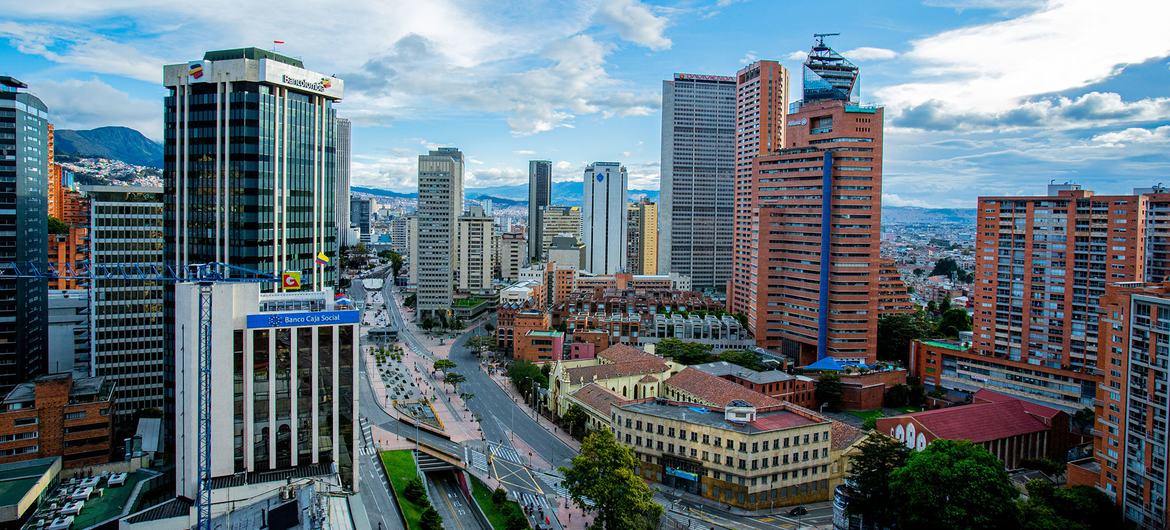However, in the midst of this rapid transformation, one question arises above all: how can innovation truly serve people, as more and more people migrate to cities?
That question is at the heart of this year’s question. World Cities Daywhich will be held in Bogotá, Colombia, under the theme People-Centered Smart Cities.
Organized by the UN urban agency, UN-HabitatThe event brings together mayors, urban living experts and community leaders from around the world to explore how data, design and digital tools can build communities that are not only smarter, but also fairer, greener and more inclusive.
By 2050, almost 70 percent of humanity is expected to live in urban areas, intensifying demands for housing, services and climate resilience.
In its message of the day, the UN Secretary General António Guterres He emphasized that innovation should close gaps, not widen them.
“A truly smart city puts people first, especially the most vulnerable,” said Guterres. “When we put people at the center, digital innovation can help drive equity and sustainability for all.”
The great experiment of Bogotá
Long known for urban experimentation, Bogotá has earned global recognition for combining technology with citizen participation.
From TransMilenio, its influential bus rapid transit system, to Ciclovía, which turns streets into car-free community spaces every Sunday, the city has redefined how urban design can foster social connection and sustainability.
For Elkin Velásquez, UN-Habitat regional director for Latin America and the Caribbean, Bogotá offers a compelling example of how data and dialogue can shape better futures.
“The global celebration here will foster international dialogue on people-centered smart cities, where technology improves quality of life and strengthens community ties,” he said.
Bogotá, capital of Colombia.
Listening to the city
Among the main speakers in Bogotá is Carlo Ratti, architect, engineer and director of the MIT Senseable City Lab in the United States, as well as curator of the 2025 Venice Architecture Biennale.
Ratti, one of the world’s leading thinkers on urban innovation, believes that cities must evolve beyond the notion of the “smart city” to what he calls the “sensible city.”
“I don’t like the term ‘smart city,’” Ratti said. “It often involves a top-down system guided solely by technology. Cities must, first and foremost, be people-focused: responsive, inclusive and adaptable. A ‘sensible city’ uses technology not for its own sake, but to better listen to and serve its citizens.”
For Ratti, Bogotá embodies this spirit. “It has long intrigued me as a leading city in urban experimentation,” he said. “Projects like TransMilenio and Ciclovía have become global case studies.
“They show how local interventions, when scaled up and adopted, can change urban trajectories.”
On principle, Ratti believes that in an era of climate emergency and demographic transition, “the most radical act may be not to build or to build differently.” Alternatively, he suggests prioritizing reuse, modernization and transformation.
“And if you really need to build on entirely new land, learn from the logic of nature. In terms of energy and circularity, a tree is still much smarter than any building we can design,” he concluded.
A people-centered vision
According to Anacláudia Rossbach, Executive Director of UN-Habitat, the city’s approach exemplifies what a people-centered smart city should look like.
“In Bogotá, the smart city approach is people-centered and aims to improve well-being and quality of life,” said Ms. Rossbach.
“Programs like Ecobarrios and Mi Casa focus on resilience and sustainability, while digital initiatives like Chatico, a virtual agent, use Artificial Intelligence to help citizens access information about public services and participate in consultations.”
These initiatives, he explained, represent a broader effort to promote sustainable mobility, data-driven policymaking and close the digital divide.

Bogotá, Colombia, is recognized as a leader in smart city initiatives, with a focus on digital transformation, mobility and urban sustainability.
“These are good examples of technology and innovation that serve people and communities,” Ms Rossbach added. “It is vital that these experiences are shared globally, allowing other cities to adapt these lessons to their own contexts.”
A global conversation
World Cities Day marks the conclusion of Urban October, UN-Habitat’s month-long campaign for sustainable and inclusive urbanization. This year’s celebration in Bogotá aims to leave a legacy, built on collaboration, learning and shared commitment to a more equitable urban future.
“The legacy we seek is twofold,” Ms. Rossbach concluded. “Firstly, show the creativity of cities in promoting smart people-centred approaches. And secondly, strengthen cooperation networks that ensure that innovation serves people, and not the other way around.”
As digital tools become increasingly integrated into urban life, the challenge for cities is clear: ensure that smart solutions remain humane.



